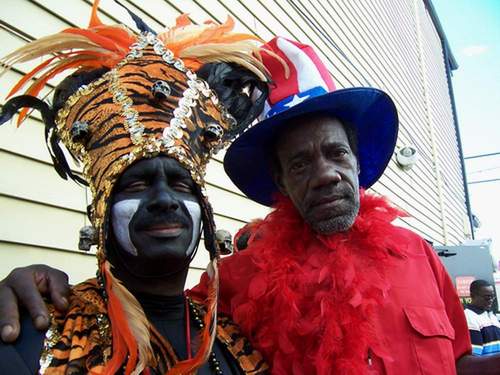I drive out to the Lower Ninth Ward and Chalmette, and it is what everyone has seen by now — complete and utter devastation. “Like a bomb went off” is the simplest way to describe it, but up close it is truly terrifying to see. Houses smashed, or slammed into telephone poles, dropped on top of cars, cars leaning against houses, boats on top of houses, roofs detached and lying in the street. More chilling, though, is that there are few debris piles or FEMA trailers indicating that a recovery or reconstruction is underway.
What pictures do not convey is the vastness of the devastation. The emptiness and destruction goes on for miles. This is a place that has been destroyed, in part by an act of nature but also by negligence. My sojourn into this no-man’s land comes a day after the release of the videotaped meeting of Bush and the Homeland Security team disproving the president’s claim that “no one could have predicted the breach of the levees.” Driving through these deserted and utterly destroyed precincts, it occurs to me that a mushroom cloud wasn’t the smoking gun we should have been worried about.
But my outrage is overwhelmed by the abject fear that this scene inspires — this is hell, this is the end of the world. This is what nightmares are made of. I feel a need to escape to some semblance of normalcy, some comfort and some human contact. Unlike most of the former residents of the Lower Ninth Ward, I am fortunate enough to be able to drive back into town. “I had to come back for Mardi Gras” isn’t just an expression of hometown pride, or resolution. It’s about the need for something normal, something like home.
I go to a coffee shop on Decatur St. in the French Quarter with Internet access, great coffee, small marble-topped tables and a classic old tiled floor. I strike up a conversation with a New Orleanian who has been living here for 40 years, who speaks of how this year’s carnival was special, how there were many native New Orleanians taking part (evidenced by the high percentage of costumed revelers), and how the spirit was very much alive. He, like many, was perplexed that anyone would even consider cancelling Mardi Gras. And, it turned out, before he moved to “the city that care forgot,” he grew up in Brooklyn in the 1950s, on the exact same block where I grew up in the 1970s. As I said, I have always been lucky in this town, and after what I have seen, I needed that little coincidence as much as New Orleans needed to give it to me.
There is a lot that needs to be done, of course. And New Orleans’ reconstruction and the return of many of its far-flung children will not be accomplished solely with good intentions or sentimental musings on the spirit of the city. It has become the front line on the war against gentrification, but there is a chance that it may be the first friendly-fire casualty in that war. Developers might be waiting out the residents who have not returned, or are struggling to keep the bulldozers at bay, preparing to unleash a privatized, Robert Moses-style level of devastation on the city, which seems all but abandoned by the government.
Mardi Gras 2006 may not have been what is needed to save New Orleans, which is still living through a serious crisis. But the true spirit, the soul of the place and the people, was even more in evidence than normal, and I left with a great hope that it will survive.

